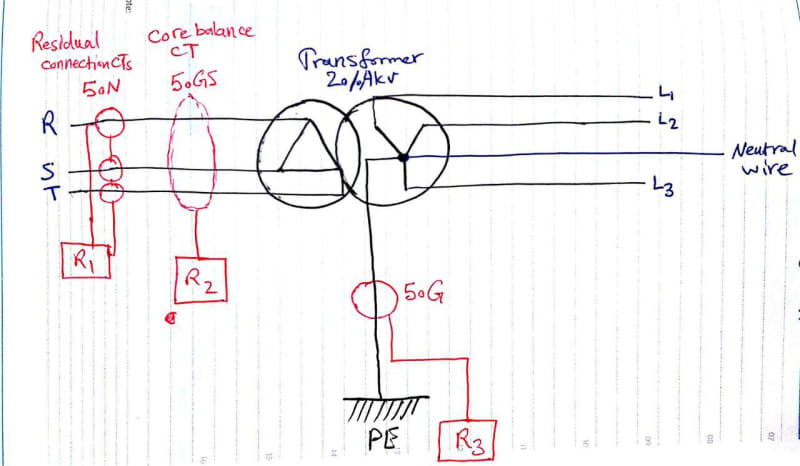Ali-rashid
Electrical
I know ANSI46 can detect unbalance conditions very well but I am trying to understand the unbalance protections for a distribution transformer via 50N, 50G and 50GS.
Our network uses delta/grounded wye transformers, so the protection scheme would be as below based on IEEE 242 book :

Considering this is a public transformer with a lot of single phase load (or any loads which may cause unbalance) connected in secondary I need some clarification for protection in unbalanced conditions.
1- In case of unbalanced loads, which of the protections (R1,R2,R3) can detect it and why?
2- In case of unbalanced loads, If there was no Neutral wire in secondary but the star is grounded, which of the protections (R1,R2,R3) will detect it and why?
3- In case of unbalanced loads, if the star is not grounded (there is no R3 protection relay as a result) but the neutral exists, which protections (R1,R2) will detect it and why?
Thanks all
Our network uses delta/grounded wye transformers, so the protection scheme would be as below based on IEEE 242 book :

Considering this is a public transformer with a lot of single phase load (or any loads which may cause unbalance) connected in secondary I need some clarification for protection in unbalanced conditions.
1- In case of unbalanced loads, which of the protections (R1,R2,R3) can detect it and why?
2- In case of unbalanced loads, If there was no Neutral wire in secondary but the star is grounded, which of the protections (R1,R2,R3) will detect it and why?
3- In case of unbalanced loads, if the star is not grounded (there is no R3 protection relay as a result) but the neutral exists, which protections (R1,R2) will detect it and why?
Thanks all
